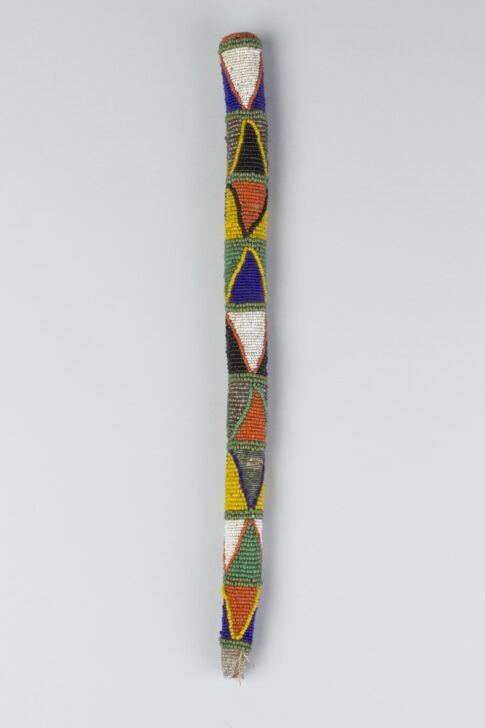Beaded Staff
Yoruba

Description
Subject Matter:
This beaded staff, called opa ileke in the Yoruba language, may have formed part of the regalia of an oba, a sacred Yoruba king. Beadwork was a sign of wealth and status, reserved for royals and religious leaders. Seed beads were introduced in the 19th century by European traders; the many colors allowed craftsmen to create patterns that showed the authority of the oba. Certain combinations of colors also referenced various orisas, or gods, through the 'hot' or 'cool' properties of different colors.
References Cited:
Doris, David. 2004. Masterworks of African Art: Yoruba Images and Aesthetics. Ann Arbor, University of Michigan Museum of Art.
Drewal, Henry John. 1989. Yoruba: Nine Centuries of African Art and Thought. New York: Center for African Art.
Drewal, Henry John and John Mason. 1998. Beads Body and Soul: Art and Light in the Yorùbá Universe. Los Angeles: UCLA Fowler Museum of Cultural History.
Pemberton, John. 2008. African Beaded Art: Power and Adornment. Northampton: Smith College Museum of Art.
Physical Description:
Wooden staff covered with multi-colored beadwork in repeating triangular patterns.
Usage Rights:
If you are interested in using an image for a publication, please visit https://umma.umich.edu/request-image/ for more information and to fill out the online Image Rights and Reproductions Request Form.